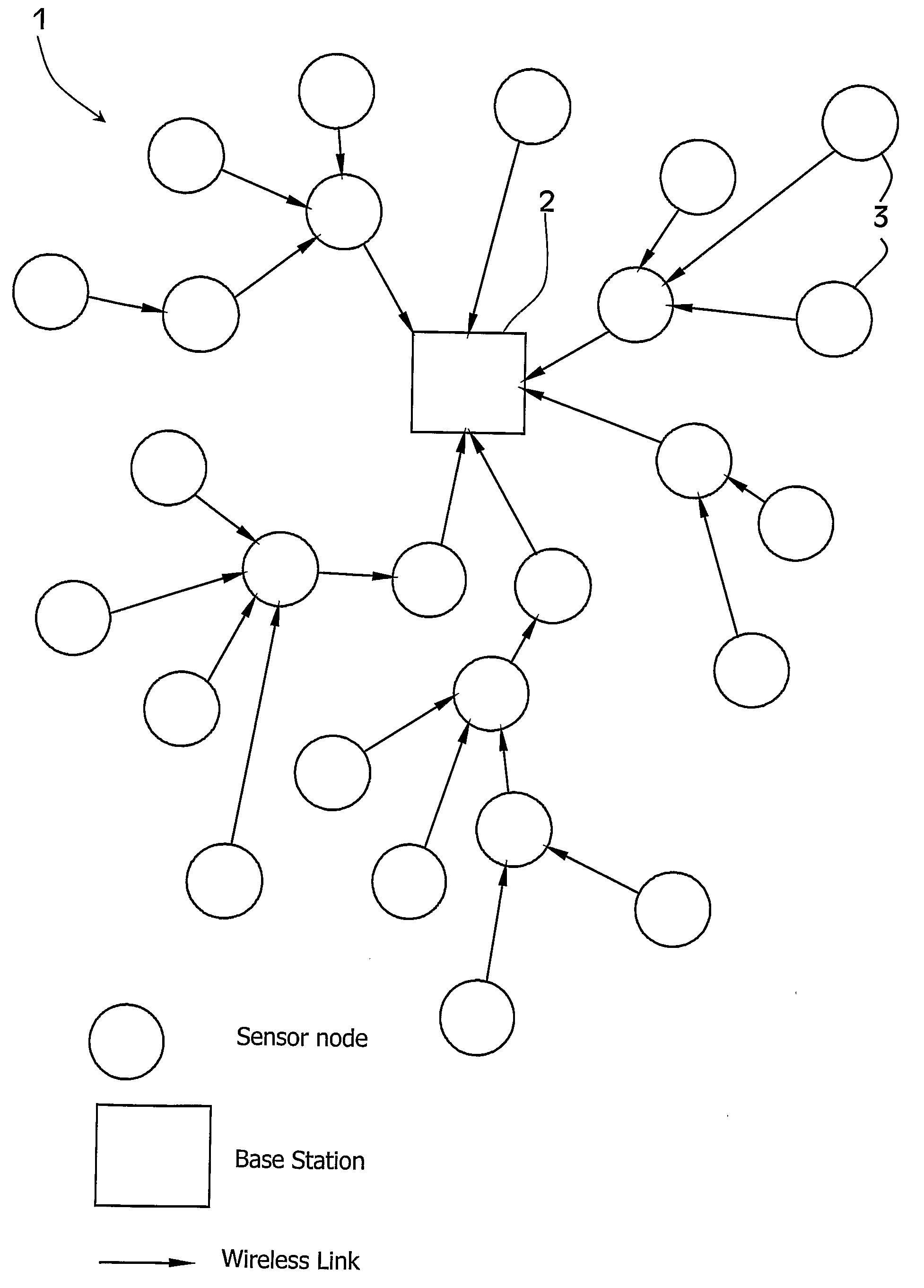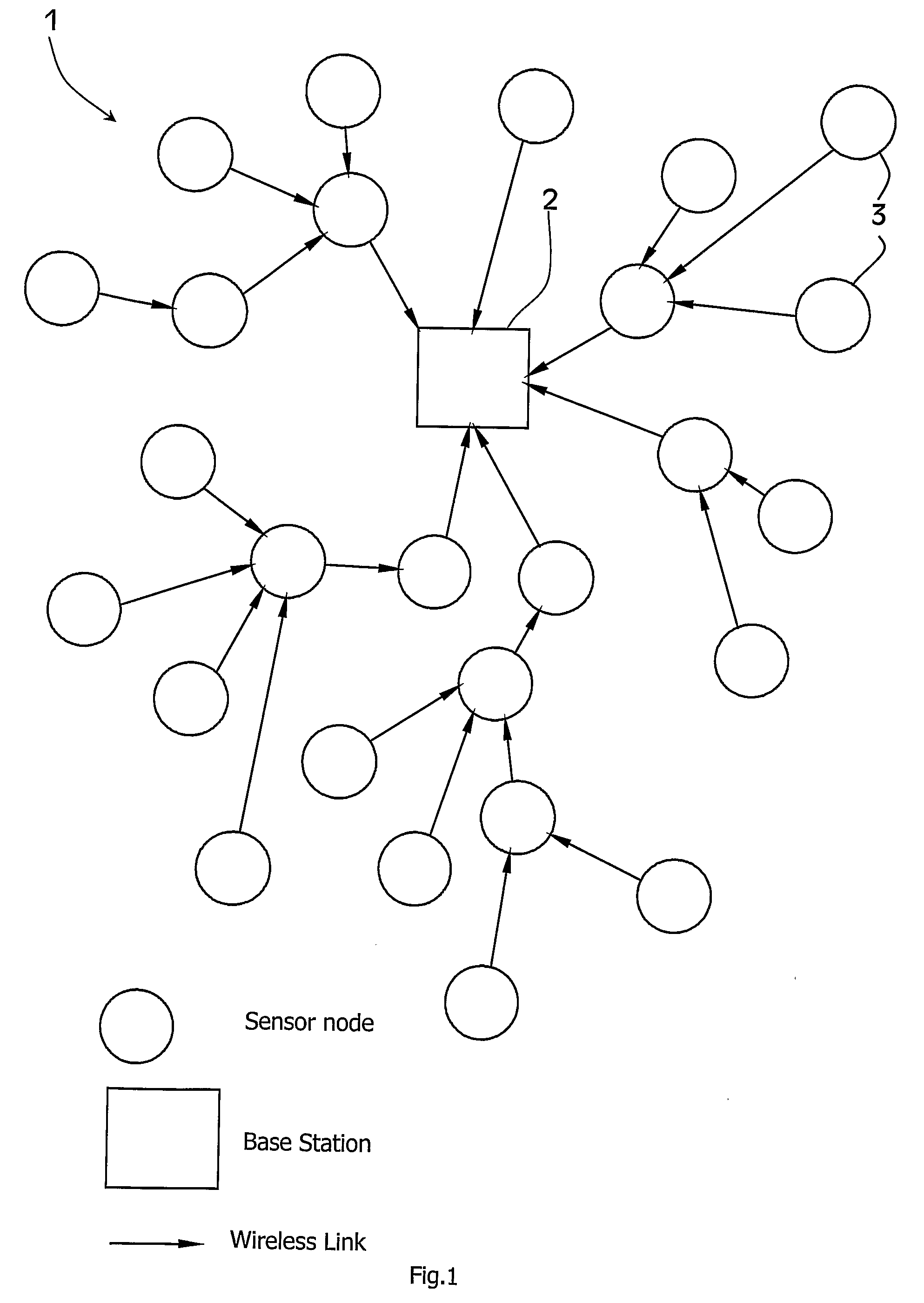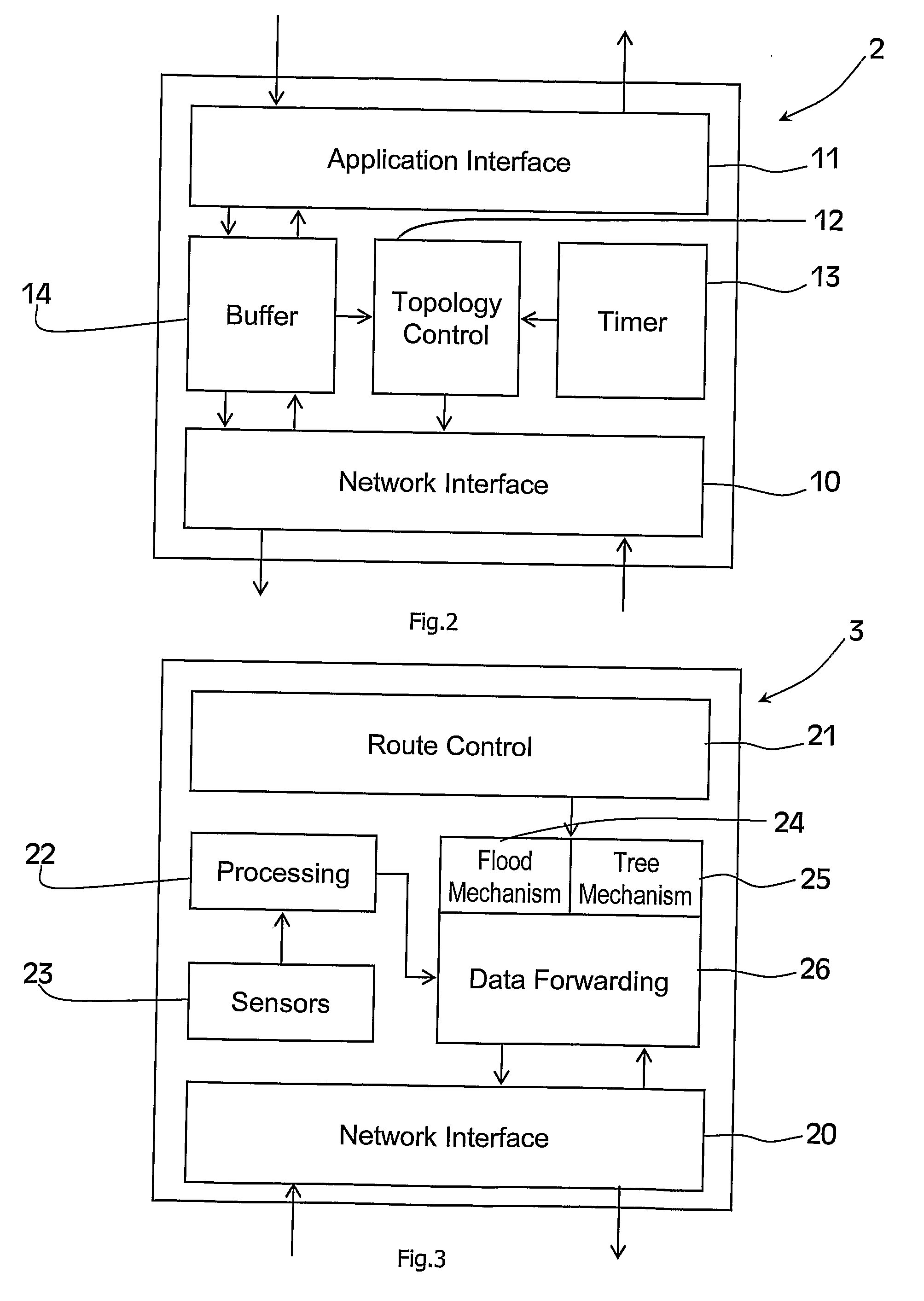Robust Routing of Data in Wireless Networks
- Summary
- Abstract
- Description
- Claims
- Application Information
AI Technical Summary
Benefits of technology
Problems solved by technology
Method used
Image
Examples
Embodiment Construction
Brief Description of the Drawings
[0032]The invention will be more clearly understood from the following description of some embodiments thereof, given by way of example only with reference to the accompanying drawings in which:—
[0033]FIG. 1 illustrates a sensor network;
[0034]FIG. 2 illustrates base station components;
[0035]FIG. 3 shows sensor node components;
[0036]FIG. 4 is a flow diagram illustrating base station operation;
[0037]FIG. 5 illustrates flow for receiving a topology discovery message;
[0038]FIG. 6 illustrates flow for receiving a topology discovery message with local rebuild enabled.
[0039]FIG. 7 illustrates flow for receiving a sensor message with lateral transmission enabled;
[0040]FIG. 8 illustrates receiving a sensor message with both lateral transmission and local rebuild enabled; and
[0041]FIG. 9 illustrates flow for forwarding sensor messages.
DESCRIPTION OF THE EMBODIMENTS
[0042]Referring to FIG. 1 a wireless network 1 comprises a base station 2 and sensor nodes 3. Wir...
PUM
 Login to View More
Login to View More Abstract
Description
Claims
Application Information
 Login to View More
Login to View More - R&D
- Intellectual Property
- Life Sciences
- Materials
- Tech Scout
- Unparalleled Data Quality
- Higher Quality Content
- 60% Fewer Hallucinations
Browse by: Latest US Patents, China's latest patents, Technical Efficacy Thesaurus, Application Domain, Technology Topic, Popular Technical Reports.
© 2025 PatSnap. All rights reserved.Legal|Privacy policy|Modern Slavery Act Transparency Statement|Sitemap|About US| Contact US: help@patsnap.com



